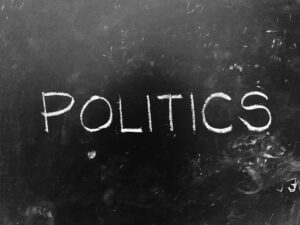For some time now, respected economists across the political spectrum have been urging politicians to address the rising level of U.S. debt. The official tally of the country’s liabilities has skyrocketed over the last decade from $15 trillion to $33.7 trillion; this dramatic increase does not even include what Washington has promised to pay out in Social Security and Medicare benefits.
In a recent article on “The Coming Fiscal Horror Show” for the journal International Economy, Duquesne Capital’s President Stanley Druckenmiller calculates what will happen if nothing is done to tame public spending. Just maintaining all the “safety net” programs currently on the books, for example, will require either a 40 percent increase in federal taxes or a permanent cut of 35 percent in the rest of government spending. “Pensions tomorrow will be a fraction of what they are today,” he adds. “Government won’t be able to pay for more than half of Americans’ health care bills.” There will be little to address crises “like climate change.”
The usual explanation for why Republican and Democrat legislators cannot get together and reach some kind of compromise on public expenditures is the mutual animosity generated by decades of political squabbling. As Fitch Ratings euphemistically put it last August when it downgraded U.S. debt from AAA to AA+, there has been “a steady deterioration in standards of governance over the last 20 years.” In November, Moody’s was even more explicit, blaming its own diminished outlook for the American economy (from “neutral” to “negative”) on “continued political polarization” in Congress and the consequent inability of lawmakers to find common ground.
With the level of what the American University professor Thomas Zeitzoff calls “political nastiness” rising sharply in recent years, it is certainly easy to see why both Fitch and Moody’s would be pessimistic about Washington’s willingness to tackle the country’s debt. But given that the antagonism between the two major parties has grown almost in tandem with the rise of U.S. spending—and that real political developments are often well camouflaged—I would invite the reader to contemplate a very different possibility, namely, that today’s political acrimony is not so much a barrier to dealing with the America’s fiscal troubles as it is the necessarily disguised first stage of actually doing so.
Consider the GOP’s dilemma when it comes to taming the federal debt. Reporters would mercilessly grill any elected Republican who tries to be more straightforward about the need for big spending cuts, demanding to know exactly what programs he or she would trim. In a country where most elections are decided by the narrowest of margins, any honest answer would be the political equivalent of resigning one’s seat.
For most Democrat office holders, leveling on the debt is an even thornier problem. As members of the party which has historically won elections by promising voters some new government entitlement, their sudden preaching of fiscal discipline would immediately be seen by beneficiaries of previously enacted social programs as betrayal.
Once more, Democrats have a coalition which does not share as consistent an understanding of the looming debt crisis as Republicans do. Most Democrats undoubtedly want to avoid a default, privately hoping for the same balance of taxes and expenditures as their GOP colleagues would like, just with higher levels of both. Yet there remains a belief in the Democrats’ relatively small but influential progressive base that the threat of national bankruptcy has been greatly exaggerated, if it even really exists. Some of these same activists would actually welcome a financial catastrophe, imagining they could use it to restructure society along more equitable lines.
In such a political environment, perhaps the only way either party can begin to deal with the debt is indirectly—by putting itself in the best negotiating position for when the coming fiscal crisis can be put off no longer. This would mean winning as many federal, state, and local elections as possible on unrelated issues while portraying the other side of the aisle as an existential threat to the future of democracy—in other words, pretty much what they are doing now.
Admittedly, this is not the most attractive approach to solving America’s overspending problem. One would hope that the country’s leaders would be brave enough to sit down and come to some agreement on budget cuts now, before having to inflict even more financial pain down the line. Then again, we are talking about real people, not the Jimmy Stewart character in Mr. Smith Goes to Washington.
Nor does the current political polarization represent some kind of coordinated and carefully crafted master plan to protect the long-term economic well-being of ordinary citizens. Most politicians are likely doing little more than trying to get themselves past the next election.
It is not even a very safe plan for dealing with the federal debt, as the entire economy could be devastated by some miscalculation as to when the deadline has finally arrived to make a viable spending deal. Even before then, China, Russia, Iran, North Korea, or some other foreign adversary could be tempted to take advantage of the growing pressure on America’s defense budget to risk a destabilizing military move.
Yet there is at least historical evidence that a politically polarized country can come to a last-minute resolution of its debt crisis, just so long as all its major social factions—from wealthy taxpayers to welfare beneficiaries to public workers—are willing to make a mutual sacrifice. Not because each faction thinks what it would have to give up is fair, but because they all realize that dividing up the financial loss is the only way to prevent a complete financial collapse. As the Bridgewater Associates founder Ray Dalio observes in his book, Principles for Navigating Big Debt Crises, managing a sovereign debt crisis “is all about spreading out the pain of the bad debts.”
Many such financial compromises have, in fact, happened over the last century: England in the 1930s, Norway and Finland in the late 1990s, and the U.S. itself after World War II.
Unfortunately, the only way for a bailout based on mutual sacrifice to work is that no group can be seen as disproportionately benefiting in the near term, even if their relative prosperity would greatly accelerate the overall economic recovery. For example, companies and entrepreneurs could not be granted the kinds of tax cuts which would stimulate investment, increase productivity, and keep inflation in check.
With populist groups on both the left and right always wanting to punish those they deem responsible for their country’s suffering, even a hint of favoritism during the resolution of a debt crisis can quickly blow up any compromise, or even spark a civil war. As Dalio puts it, “How well the people and the political system handle [the spread of financial pain] is key to how well the economy and society weather the period.”
What all this means for America is that, while its current political polarization is not necessarily a barrier to overcoming its debt problem, even a successful resolution will likely drag out much longer than needed. But at least there will be plenty of time for everyone to consider how we got into our fiscal mess and what might hopefully prevent it from happening again.





